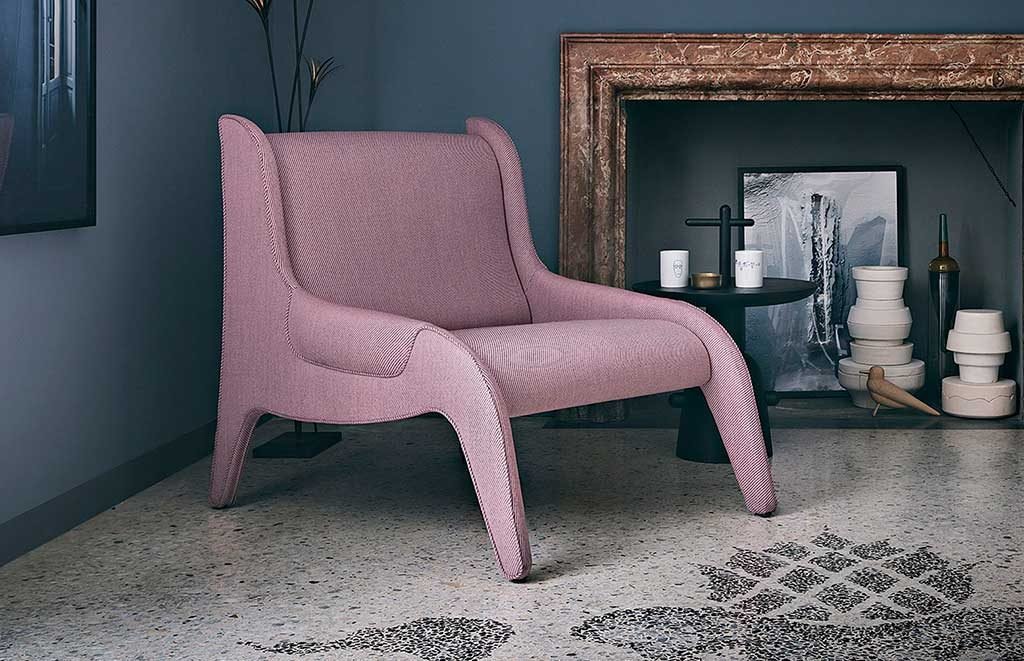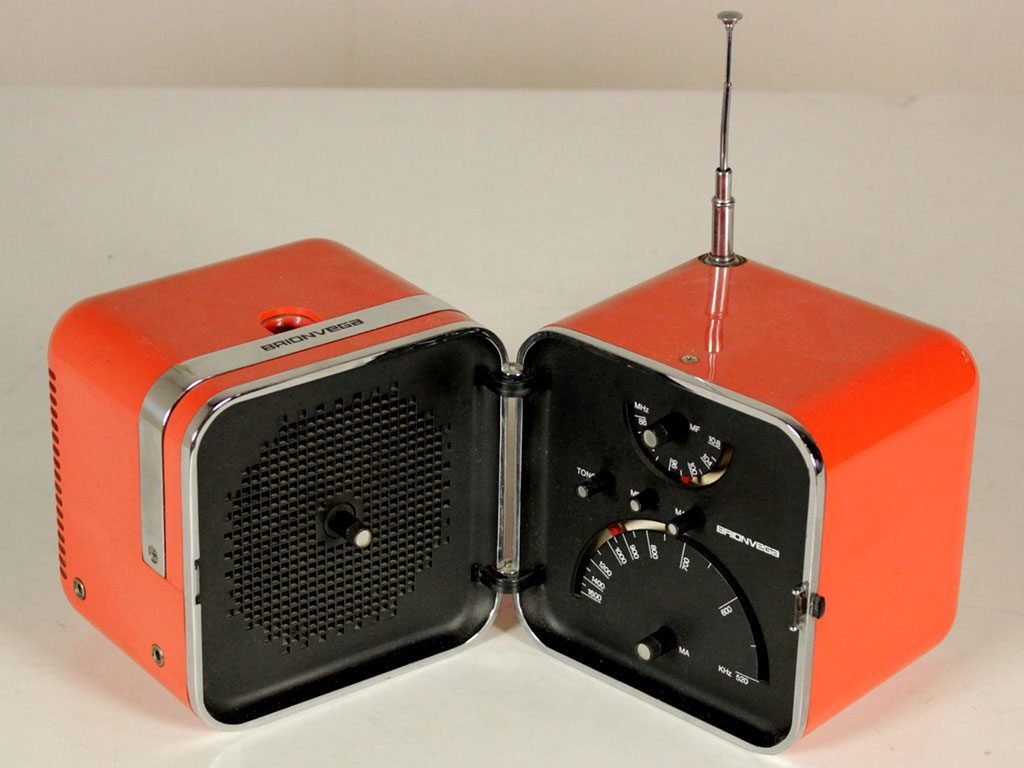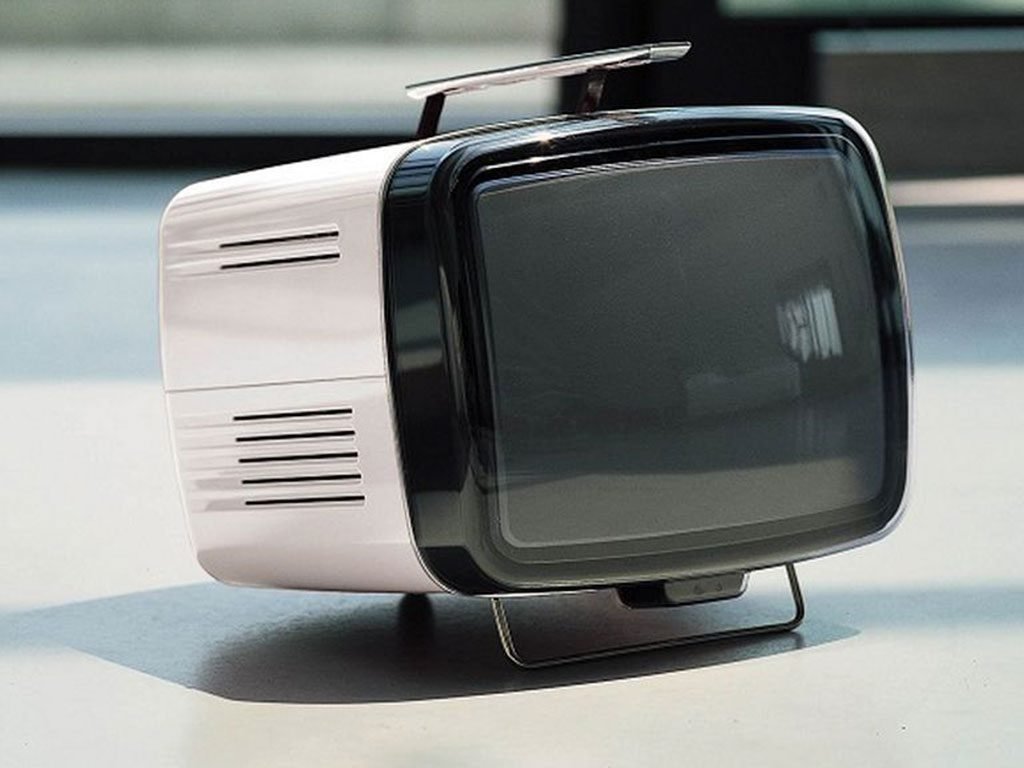Marco Zanuso was born in Milan on May 14, 1916. He graduated in architecture in 1939, and his long professional career began in 1945, at the end of World War II. He was an architect, designer, urban planner, and landscape architect, but above all, a “thinking architect,” always ready to redefine customs and traditions and challenge conventions.
Together with the BBPR studio, Alberto Rosselli, Franco Albini, Marcello Nizzoli, and the Castiglioni brothers, he contributed to the post-war reconstruction of Milan and to the debate on the Modern Movement in architecture and design.
Also active in the publishing field, from 1947 to 1949 he was editor-in-chief of the magazine Domus and in 1952 he was editor of Casabella. In 1954 he participated in the founding of the ADI and two years later in the creation of the Compasso d’Oro award, designing the prize together with Alberto Rosselli and assuming its presidency between 1966 and 1969.
Marco Zanuso and Alberto Rosselli, Compasso D’oro award, 1956. The award refers to Adalbert Goeringer’s compass and the golden ratio. The two-dimensional drawing is the work of graphic designer Albe Steiner.

The figure of the industrial designer as we know it today was born with Zanuso, among the first in Italy to adopt an approach based on the concepts of integral and integrated design, focusing on mass production and affordable products.
Since the postwar period, the world of design has changed radically with the advent of new plastic materials and components for electronic equipment. Design has embraced this change, combining new technological possibilities with aesthetic and communicative considerations. The form of an object intended for serial reproduction is a synthesis of opportunities, research, and innovations embedded in the concrete process that links creativity, production, and the sociocultural context.
The first experiments took place with Arflex, a company founded in 1947 by Pirelli with the aim of creating car seats using foam rubber and elastic bands, new materials they had developed. Charged with designing the first models, Zanuso decided to use them for the first time in the home furnishings sector: thus were born the Antropus armchair and the Lady armchair, produced on a previously unimagined industrial scale.
Marzo Zanuso, Antropus armchair, Artflex, 1948, now produced by Cassina ph. Cassina. Armchair designed in 1949 specifically for the set of Thornton Wilder’s comedy “The Anthropus Family” on stage at the Piccolo Teatro in Milan. Initially produced by Artflex, it was re-edited by Cassina in 2015 also in the iconic original version in red cloth.

Marco Zanuso, Lady armchair, Artflex, 1951, now produced by Cassina. ph.Cassina

Gold medal at the IX Triennale di Milano in 1951, the Lady armchair is absolutely innovative not only in the choice of materials but also in the industrial process inspired by automotive production, which sees the various components made separately and assembled only at the end.
Technological innovation is also accompanied by a refined aesthetic research inherited from the Modern Movement aimed at achieving a pure and essential form. The two armchairs are part of Cassina’s “I Maestri” collection.
Marco Zanuso, super-automatic sewing machine MOD. 1102, Borletti, 1956 (Compasso d’Oro 1956) ph. Paolo Monti

Against the backdrop of an Italy in the midst of its economic boom, the fruitful collaboration with the German designer Richard Sapper began: from 1958 to 1971 the couple designed a large number of accessories, furniture, lamps and famous electronic devices. These were the years of Gio Ponti, the Castiglioni brothers, and all those designers who, working in synergy with Italian companies, laid the foundations for what is still known today as Made in Italy.
Zanuso’s goal has always been to continuously experiment to translate technical elements, materials, and new technologies into form to give life to “archetypes of objects,” such as the Seggiolina K 1340 for Kartell. Developed with Sapper in 1964, it is the first chair in the world to be made entirely of injection-molded polyethylene, a futuristic application that paved the way for the use of plastic for home and office furniture. Easily stackable and durable, the chair becomes a game capable of stimulating children’s imagination.
Marco Zanuso and Richard Sapper, Children’s Chair K4999, Kartell, 1960-1964 (Compasso d’Oro 1964)

Among the projects they co-designed, the various electronic devices they designed for the Italian company Brionvega are by far the best-known and most iconic, such as the Doney television, the first portable television made in Europe, and the Cubo radio.
The 1964 radio perfectly embodies both the formal research already explored in the world of furniture and the new possibilities – aesthetic and technological – revealed by the new microelectronic components. Compact in its controls and brightly colored, it is still in production today, maintaining the external shape unchanged but internally adapted to contemporary technology with the addition of Bluetooth connection, alarm clock and headphone output.
Marco Zanuso and Richard Sapper, Radio Cubo, Brionvega, 1962

Marco Zanuso and Richard Sapper, Brionvega Doney 14 television, Brionvega, 1962 (Compasso d’Oro 1962)

A prerogative of Zanuso’s many successes is the combination of details and specific solutions for the optimization of industrial processes with a profound predisposition towards form. In every single object he manages to find the middle ground between rationalism and sensuality.
On the left, Marco ZanusoRichard Sapper, Grillo telephone, Siemens, 1964 (Compasso d’Oro 1967). On the right, Marco Zanuso, Ariante fan, Vortice, 1973 (Compasso d’Oro 1979)

An object that has become a symbol of post-war Italian modernity, the Grillo telephone has a modern design and all the various components (receiver, dial, microphone) are contained in a single unit. With its snap-on opening and the possibility of being closed like a clamshell, it can be considered the precursor of the cell phone models produced starting in the 1990s.
Alongside his work as a designer, the 1960s ushered in the most prolific period of his career as an architect: among his best-known projects were the Necchi factory in Pavia, the IBM plant in Rome, the Olivetti factories abroad, and the renovation of the Piccolo Teatro in Milan.
Marzo Zanuso, Antropus armchair, Artflex, 1948, now produced by Cassina ph. Cassina.

He dedicated the same commitment to design to teaching at the Milan Polytechnic starting in 1965, making a decisive contribution to the creation of today’s Faculty of Design. He taught extensively in a variety of courses: Industrial Design, Scenography, Architectural Technology, and finally Industrial Design until 1986.
Among the countless awards received are five Compasso d’Oro awards, the Gold Medal and the Grand Prix of the Milan Triennale, as well as the inclusion of several pieces in the world’s major design collections, including the permanent one at the MoMA.
As the culmination of a long career in the design world, in 1985 he received the Compasso d’Oro for his career and in 1999 an honorary degree in Industrial Design from the Milan Polytechnic.
Marco Zanuso passed away in 2001 at the age of 85, but his eclectic figure is remembered in the international design scene for his ability to make everyday objects modern and accessible to all.
Marco Zanuso, Model 275 Oluce Lamp, 1963

In the cover image, portrait of Marco Zanuso ph. Mohd



























